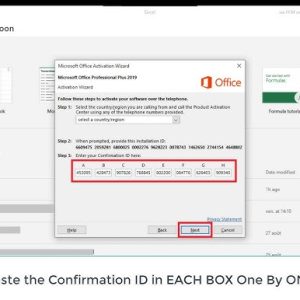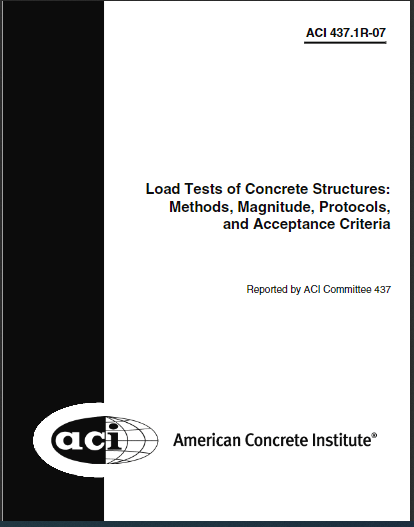Description
-
 MS Office Home & Business 2024 – Lifetime License Key – Mac/PC$150.00 – $160.00
MS Office Home & Business 2024 – Lifetime License Key – Mac/PC$150.00 – $160.00 -
![Load Tests of Concrete Structures: Methods, Magnitude, Protocols, and Acceptance Criteria 4 [Retail] Office 2021/2019/2016 Pro Plus Activates 5 PCs Online](https://civilmdc.com/wp-content/uploads/2024/05/Microsoft-Office-professional-plus-all-in-one-free-download-e1717158603220-300x300.jpg) [Retail] Office 2021/2019/2016 Pro Plus Activates 5 PCs Online$50.00 – $120.00
[Retail] Office 2021/2019/2016 Pro Plus Activates 5 PCs Online$50.00 – $120.00 -
 Microsoft office /Windows Activation Service for Phone Activation Method (Get Confirmaiton ID)$3.00
Microsoft office /Windows Activation Service for Phone Activation Method (Get Confirmaiton ID)$3.00 -
 MS SQL Server 2022 Standard | 1 Key for 1 PC$80.00
MS SQL Server 2022 Standard | 1 Key for 1 PC$80.00 -
 Youtube Premium | 4 months Premium Membership$10.00
Youtube Premium | 4 months Premium Membership$10.00 -
Product on sale
 Adobe Stock 40 creditsOriginal price was: $99.00.$20.00Current price is: $20.00.
Adobe Stock 40 creditsOriginal price was: $99.00.$20.00Current price is: $20.00. -
Product on sale
 MS Office 2021 Home & Business 1 MAC Bind for iOSOriginal price was: $429.00.$85.00Current price is: $85.00.
MS Office 2021 Home & Business 1 MAC Bind for iOSOriginal price was: $429.00.$85.00Current price is: $85.00. -
 MS Office 365 Personal | Family Plan on Your Email Id – 1 Year subscription$30.00 – $66.00
MS Office 365 Personal | Family Plan on Your Email Id – 1 Year subscription$30.00 – $66.00 -
 MS Project Professional 2024 | 2021 | 2019 | 2016 1 PC Online key Activation$20.00 – $55.00
MS Project Professional 2024 | 2021 | 2019 | 2016 1 PC Online key Activation$20.00 – $55.00 -
Product on sale
 Adobe Creative Cloud (All apps) – PersonalOriginal price was: $560.00.$200.00Current price is: $200.00.
Adobe Creative Cloud (All apps) – PersonalOriginal price was: $560.00.$200.00Current price is: $200.00. -
 Windows Server 2019 Online Key$22.00
Windows Server 2019 Online Key$22.00 -
 MS Office Visio Professional 2024 | 2021 | 2019 | 2016 PC Online Key Activation$20.00 – $45.00
MS Office Visio Professional 2024 | 2021 | 2019 | 2016 PC Online Key Activation$20.00 – $45.00 -
Product on sale
 MS 2019 Project Professional Windows 1 PC Online keyOriginal price was: $429.00.$22.00Current price is: $22.00.
MS 2019 Project Professional Windows 1 PC Online keyOriginal price was: $429.00.$22.00Current price is: $22.00. -
 McAfee LiveSafe Internet Security Antivirus 1 PC – 10 YEARS – Key$29.00
McAfee LiveSafe Internet Security Antivirus 1 PC – 10 YEARS – Key$29.00 -
 Office Professional 2016 – Lifetime License Key – 1PC$18.00
Office Professional 2016 – Lifetime License Key – 1PC$18.00
Significant revisions were made in Chapter 9 of ACI 318-02to the load factors to be used for determining required strength. The load factor for dead load was reduced from 1.4to 1.2, and the load factor for live load was reduced from 1.7to 1.6; other changes were also made as given in equations for required strength in Chapter 9. The strength-reduction factors (φ-factors) were also modified.
The φ-factor for shear and torsion was reduced from 0.85 to 0.75, while the φ-factor for compression-controlled members was reduced from 0.70to 0.65 unless spiral reinforcement is provided. The φ-factor for tension-controlled members (most flexural members)was not reduced, and remains 0.9.The load factors and load combinations of ACI 318-05match those of ASCE 7-02 (American Society of Civil Engi-neers 2002). The changes were made to unify the load factors used to design concrete structures with those generally usedto design structures constructed of other materials, such as structural steel.
The changes also facilitated the design of concrete structures that included members of materials otherthan concrete.Chapter 20 (Strength Evaluation of Existing Structures) of318-02 and 318-05 was not changed from the previous codewith regard to load test procedures. Section 20.3.2 (LoadIntensity) of ACI 318-02 was not changed from the 1999edition; that is, the total test load (including dead loadalready in place) was still defined to be not less than0.85(1.4D + 1.7L), with live load permitted to be reduced inaccordance with the applicable building code.
-
 Bitdefender Total Security Antivirus | Genuine Activation Code$30.00
Bitdefender Total Security Antivirus | Genuine Activation Code$30.00 -
 IDEA StatiCa Education$30.00
IDEA StatiCa Education$30.00 -
 Stealth Writer AI | Bypass AI Detection | Get 100% Human Score$10.00
Stealth Writer AI | Bypass AI Detection | Get 100% Human Score$10.00 -
 Adobe Acrobat XI Professional with License Key Activation$29.00
Adobe Acrobat XI Professional with License Key Activation$29.00 -
 Autocad 2007 – OFFLINE INSTALLER + Video Tutorial Install and activation – LIFETIME$7.00
Autocad 2007 – OFFLINE INSTALLER + Video Tutorial Install and activation – LIFETIME$7.00 -
 ChatGPT PLUS Subscription$7.00
ChatGPT PLUS Subscription$7.00 -
 ESET Internet Security Antivirus | 1 Year License$20.00
ESET Internet Security Antivirus | 1 Year License$20.00 -
 Course Hero Account 📗1 month$10.00
Course Hero Account 📗1 month$10.00 -
 General Software Collection | Request books, Codes, Research Articles | Request Software on Demand$3.00 – $35.00
General Software Collection | Request books, Codes, Research Articles | Request Software on Demand$3.00 – $35.00 -
 Vmware Workstation 16 Pro Lifetime License$150.00 – $199.00
Vmware Workstation 16 Pro Lifetime License$150.00 – $199.00 -
 NORD VPN/IP Vanish Account Subscription 6 Month | 1 Year | 2 Years$20.00 – $60.00
NORD VPN/IP Vanish Account Subscription 6 Month | 1 Year | 2 Years$20.00 – $60.00 -
 Internet Download Manager IDM Version 6.41 fully lifetime activation with installation video | 5 times faster download (Pre-Activated)$6.00
Internet Download Manager IDM Version 6.41 fully lifetime activation with installation video | 5 times faster download (Pre-Activated)$6.00 -
 Lumion 2023 | 12.5 | 12 |11.5 Pro Full (Lifetime) – Include Installation Tutorial$10.00 – $30.00
Lumion 2023 | 12.5 | 12 |11.5 Pro Full (Lifetime) – Include Installation Tutorial$10.00 – $30.00 -
 Adobe Acrobat Pro DC 2024 | 2023 | 2022 | 2021 | 2020 | Latest Full Version | Lifetime$10.00 – $20.00
Adobe Acrobat Pro DC 2024 | 2023 | 2022 | 2021 | 2020 | Latest Full Version | Lifetime$10.00 – $20.00 -
![Load Tests of Concrete Structures: Methods, Magnitude, Protocols, and Acceptance Criteria 32 Sketch Up Pro 2024 | 2023 | 2022 | 2021 Full Package Bundle + Vray 6 + Enscape 3.4 + Thea Render 3.5 [Lifetime & Full]](https://civilmdc.com/wp-content/uploads/2022/03/Sketch-Up-Pro-2023-300x300.jpg) Sketch Up Pro 2024 | 2023 | 2022 | 2021 Full Package Bundle + Vray 6 + Enscape 3.4 + Thea Render 3.5 [Lifetime & Full]$10.00 – $40.00
Sketch Up Pro 2024 | 2023 | 2022 | 2021 Full Package Bundle + Vray 6 + Enscape 3.4 + Thea Render 3.5 [Lifetime & Full]$10.00 – $40.00


